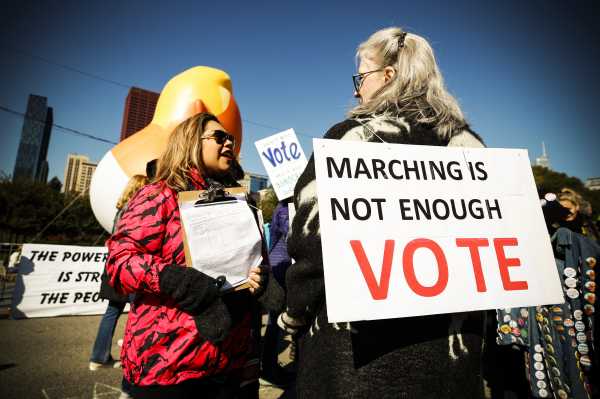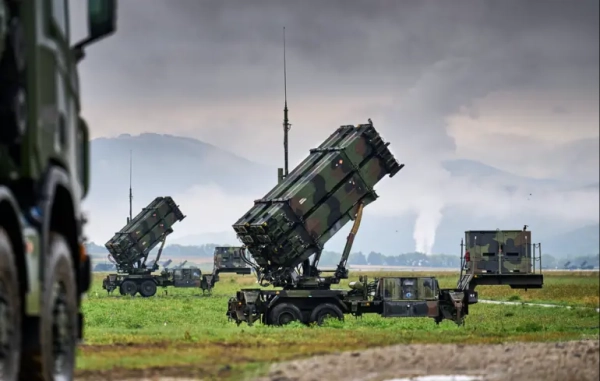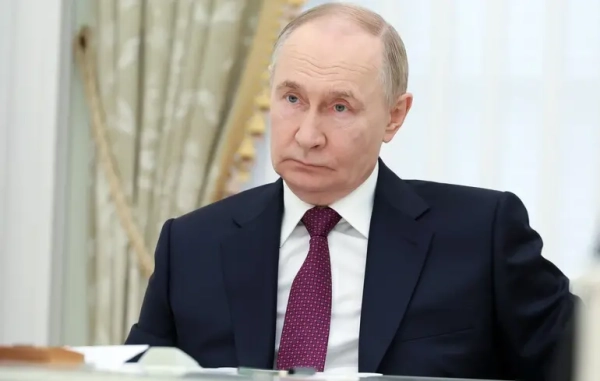
Something stuck out if you looked last week across 43 recent polls of competitive House races: Almost exactly 10 percent of voters said they were undecided, on average, just a few weeks before the 2018 midterm elections.
In Michigan’s 11th Congressional District, where Obama administration alum Haley Stevens is running against Republican business executive Lena Epstein, a full 17 percent of voters were undecided. In Arizona’s Sixth Congressional District, featuring a face-off between Republican incumbent David Schweikert and Democratic challenger Anita Malik, it was 14 percent.
These particular polls were conducted in a new project by New York Times and Siena College that is running polls live through November 4 in many of the most competitive districts in the country. (You can read more about the poll’s methodology here.)
So many undecided voters suggest a wide range of possible outcomes, and as Vox’s Andrew Prokop pointed out recently, polls can be wrong. The race for the House is close; any swing among undecideds late in the game could make the difference between a bare Republican majority and a Democratic takeover.
Nothing is ever simple with election polling. So I asked nine pollsters and election forecasters what to make of those undecided voters. A few crucial things we know from these and other surveys this year and from history: Undecided voters may be unlikely to vote at all; they might split roughly evenly between parties, and a high number of this year’s remaining undecideds are women.
1) Undecideds depend a lot on the pollster
Almost every pollster had the same initial question when I asked about undecided voters in these surveys: How hard are they pushing people who initially say they’re undecided to pick a candidate? (Versus letting them remain undecided.)
“Some polls don’t push at all, others train interviewers to follow up ‘don’t knows’ with a ‘Well, how do you lean right now?’ and still others have a formal follow-up question that pushes for a choice,” Charles Franklin, who leads Marquette University’s polling, said.
In the case of the Times/Siena College polls, interviewers took a moderate approach.
“It is our policy that interviewers follow up and reprobe when someone is undecided, but we do not ask respondents if they are leaning towards a specific candidate,” Meghann Crawford, director of data management at Siena, said.
So the ostensibly high number of undecideds in the Times House polling might be a bit of a mirage. Other pollsters, who said they do push undecided voters to make a choice, told me they have not seen as high of an undecided rate in their own surveys.
2) This isn’t as big a number of undecideds as it sounds
Several pollsters told me flatly they didn’t think a 10 percent undecided average was all that unusual.
“The undecided does not seem that high for a named congressional ballot,” Stan Greenberg, a longtime Democratic pollster, said.
It’s important to remember that House candidates, and even members of Congress, tend to be less well known than senators or governors — and much less well known than presidential candidates. Voters are less likely to have well-developed opinions about them and that therefore make them more likely to say they don’t know how they’ll vote.
Many undecided voters are low-information voters. Michigan’s 11th District might be instructive here: It is an open seat, being contested by a relatively unknown Republican state legislator and an equally unknown Democratic woman who doesn’t currently hold public office. Maybe it shouldn’t be a surprise that 17 percent of voters aren’t yet sure how they’ll vote. These are not household names on the ballot.
“Those strike me as reasonable if we believe (as I do) that House races are less visible than are Senate races and would therefore likely have more undecideds,” Franklin said. “I’m not surprised at the undecided rates and don’t consider them unusual for House races.”
3) A lot of undecided voters probably won’t vote
Midterm elections aren’t presidential elections. If voters aren’t particularly fired up about candidates on the ballot — or don’t even know who they are — they probably won’t vote in the end at all. The inflated number of undecideds might give us a false impression that “undecided voters” will ultimately cast a vote when it’s more likely that they won’t. It’s the voters who are already decided who are most likely to actually turn out.
“This close to Election Day, I believe some percentage of these undecided voters will not vote,” pollster Anna Greenberg said. “By definition, they are lower information and less ideological voters, who are lower turnout voters.”
This theory bears out if you dig into the details of the Times/Siena polls. Here are a few examples from races with high numbers of undecided voters:
- Michigan 11th: 63 percent of people who say they’re “not at all likely” to vote are undecided, and 42 percent of people who say they are “not very likely” to vote are undecided
- Arizona Sixth: 57 percent of people who say they are “not at all likely” to vote are undecided, and 65 percent of people who say they are “not very likely” to vote are undecided
- Virginia 10th: 55 percent of people who say they are “not at all likely” to vote are undecided, and 62 percent of people who say they are “not very likely” to vote are undecided
Most undecided voters openly admit they aren’t very likely to vote.
4) Undecided voters don’t really “break” one way or the other
One of the old wives’ tales of American politics is that undecided voters always break for the challenger. From Franklin at Marquette University (emphasis mine):
Nate Silver at FiveThirtyEight has also investigated the question and concluded, regarding undecideds breaking for challengers: “My research into polls of gubernatorial, Senate and House races over the last 15 years or so suggests that this just is not true.”
“In general, the incumbent candidate has been as likely to overperform his polling margin on Election Day as to underperform it,” Silver wrote.
So Democrats should not be banking on the idea that they will mop up with this 10-percent bloc — and neither should Republicans.
5) This year’s undecided voters are more moderate and conservative
Demographically, the undecided voters this year are not highly educated, and probably don’t identify with one party or the other.
Greenberg said that, before the contentious fight over Brett Kavanaugh’s Supreme Court nomination, the undecided voter had leaned Republican. The overtly partisan nature of the Supreme Court battle helped consolidate GOP support, she said, but that might not necessarily hold over the last few weeks of the campaign before voters vote.
“The undecided vote has had a GOP lean so it makes sense that Kavanaugh produced some GOP consolidation,” she said. “Whether it endures [to Election Day] or not is another issue.”
Barbara Carvalho at Marist University sent me details on the persuadable voters they found in Wisconsin, Minnesota, and Nevada. In general, those voters were more likely to say they were independent and to identify ideologically as moderate or conservative.
That would seem to suggest that Republicans are at risk if some of the voters who lean their way but don’t always vote the party line might stay home.
The Marist’s statewide surveys found:
- In Wisconsin, 15 percent of voters say their Senate vote is persuadable: 71 percent are independent, while 39 percent say they are conservative and 36 percent say that they are moderate.
- In Nevada, 19 percent of voters say their governor vote is persuadable: 50 percent are independent, while 53 percent say they are moderate and 24 percent say that they are conservative.
- In Minnesota, 18 percent of voters say their governor vote is persuadable: 74 percent are independent, while 48 percent say they are moderate and 26 percent say that they are conservative.
6) Women are more likely to be undecided voters in 2018
We also know from those Marist polls that a lot of undecided voters are women.
Check out at the numbers in the crosstabs:
- In the Wisconsin Senate race, of the persuadables, 58 percent are women
- In the Nevada governor race, of the persuadables, 52 percent are women.
- In the Minnesota governor race, of the persuadables, 60 percent are women.
Both parties have identified suburban Republican-leaning women as an important cohort in the 2018 midterms. These Marist’s findings (showing that undecided voters are more likely to be women and more likely to be moderate or conservative) would seem to confirm that supposition.
As we’ve established, many of those voters probably won’t vote. But those who do could prove to be critical in the 2018 midterms.
Sourse: vox.com






